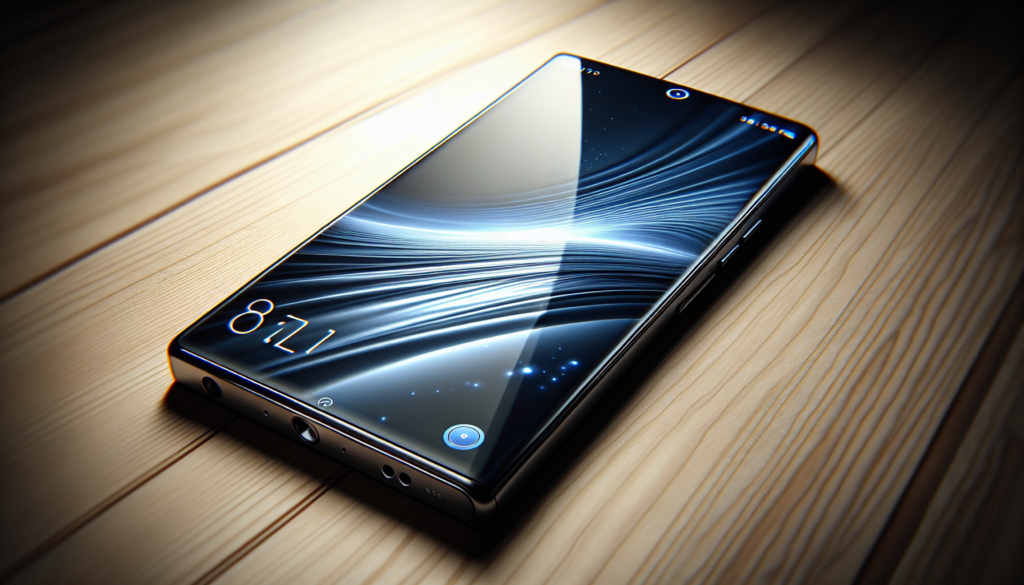
Introduction
Overview of Top Smartphones of 2025
In 2025, the smartphone landscape is vibrant, showcasing remarkable devices that blend advanced technology and stylish design. The top contenders include:
- Apple iPhone 17: Renowned for premium features and user-friendly interface.
- Samsung Galaxy S23 Ultra: Celebrated for versatility and cutting-edge camera technology.
- Google Pixel 10: A favorite among photography enthusiasts for its AI-driven capabilities.
- OnePlus 11 Pro: Combines flagship performance with competitive pricing.
- Motorola Moto G: Offers affordability without compromising on innovation.
Importance of Staying Updated on Mobile Technology Trends
Staying informed about mobile technology is essential for consumers and enthusiasts alike. New advancements, such as AI integration and 5G capabilities, continually reshape user experiences. By understanding the latest trends, users can make well-informed decisions, ensuring they choose smartphones that suit their needs, lifestyle, and budget. This knowledge empowers consumers in an increasingly competitive market.
Advancements in Smartphone Technology
5G Integration in Mobile Devices
The advent of 5G technology has transformed mobile connectivity, providing unprecedented speed and responsiveness. In 2025, most flagship smartphones, such as the Samsung Galaxy S25 Ultra and Google Pixel 9 Pro, prominently feature 5G integration. This connectivity enables:
- Lightning-fast download speeds: Streaming and downloading content becomes instantaneous.
- Enhanced gaming experiences: Low latency makes online gaming smoother.
- Improved streaming quality: Users can enjoy high-definition content without buffering.
Enhanced Artificial Intelligence Features
Simultaneously, AI has become a core component of modern smartphones. Devices like the iPhone 16 Pro and Google Pixel 9 Pro leverage AI to provide smarter functionality, including:
- Real-time photo enhancements: AI processes images for stunning clarity and detail.
- Voice recognition: Features like improved Siri understand natural language better, making interactions seamless.
- Smart multitasking: On-device AI helps manage apps more efficiently, adapting to user behavior for improved performance.
These advancements not only enhance user experience but also showcase technology’s potential in everyday life.
Top Contenders in the Smartphone Market
Apple’s Latest Flagship Models
As of 2025, Apple’s latest offerings, primarily the iPhone 16 Pro, continue to impress tech enthusiasts with superior performance and design. This stunning device features:
- 6.3-inch OLED display: With a crisp resolution and vibrant colors, it provides an immersive viewing experience.
- A18 Pro chip: Known for its efficiency and speed, this processor allows seamless multitasking and the ability to run demanding applications smoothly.
- Robust camera capabilities: The triple-camera system offers versatile photography options with 48MP ultra-wide and a detailed 12MP telephoto.
Apple remains a key player in the smartphone market, blending innovation with elegance to cater to its loyal users.
Samsung’s Innovative Smartphone Lineup
Samsung continues to dominate with its Galaxy S25 Ultra as the flagship device. Key features include:
- 6.9-inch AMOLED display: This stunning screen boasts high resolution and anti-glare technology for visibility in sunlight.
- Quad-camera system: Including a 200MP main camera, Samsung’s photography capabilities are designed for both casual and professional users.
- Snapdragon 8 Elite processor: The powerful chipset enhances gameplay and multitasking, solidifying Samsung’s reputation as a leader in technological advancement.
This focus on performance ensures that Samsung remains at the forefront of the smartphone industry.
Emerging Chinese Brands on the Global Stage
While established brands like Apple and Samsung maintain dominance, Chinese brands are rapidly gaining traction. Companies like Xiaomi, Oppo, and OnePlus are releasing compelling devices with competitive specs at more accessible prices.
For example:
- OnePlus 13: Features a 6.8-inch AMOLED display, strong performance with Snapdragon 8 Elite, and rapid charging capabilities.
- Xiaomi’s flagship: Known for excellent camera systems and high battery life without compromising on price.
As these brands evolve, they bring innovative features to the market, posing a significant challenge to traditional leaders.
Key Features and Innovations
Foldable Displays and Flexible Form Factors
Foldable smartphones are carving a niche in the market, offering innovative form factors that blend functionality with style. For instance, the Google Pixel 9 Pro Fold boasts an impressive 8-inch tablet display when unfolded, making it an excellent choice for multitaskers.
- Portability: Easily fit into pockets when folded.
- Versatility: Seamlessly switch between phone and tablet modes.
These devices highlight a trend toward more adaptable smartphones, catering to a diverse range of user needs.
Advancements in Camera Technology
Camera technology continues to evolve, with manufacturers like Apple and Samsung pushing the envelope for quality. The iPhone 16 Pro showcases:
- 5x optical zoom: Enables clearer long-distance shots, enhancing photography options.
- AI-powered features: Real-time processing for better image quality and low-light performance.
These advancements make photography more accessible and enjoyable, even for casual users.
Sustainable and Eco-Friendly Smartphone Designs
As environmental consciousness grows, smartphone manufacturers are focusing on sustainable designs. Brands like OnePlus and Apple are leading the charge by incorporating recycled materials and improving energy efficiency in production.
- Recycled packaging: Reduces waste and carbon footprint.
- Eco-friendly materials: Usage of aluminum and recycled plastics in devices.
By prioritizing sustainability, these companies are paving the way for a greener future in tech. This trend not only benefits the environment but also appeals to eco-conscious consumers looking for responsible choices in their device selections.
User Experience and Interface
Customization and Personalization Options
In 2025, smartphones are more personalized than ever, allowing users to tailor their devices to fit individual needs. For example:
- Home Screen layouts: Users can customize app placements, widgets, and themes.
- AI-driven suggestions: Features like Samsung’s personalized recommendations enhance user interactions by predicting needs.
These options enhance user engagement and create a more intimate device experience.
Integration of Augmented Reality Features
Augmented Reality (AR) capabilities have become a staple in modern smartphones. The iPhone 16 and Samsung Galaxy S25 utilize AR for:
- Enhanced gaming experiences: Real-world environments blend with digital interactions.
- Virtual home decor: Apps like IKEA Place let users visualize furniture in their homes.
These engaging features elevate user experiences beyond traditional interfaces.
Accessibility and Inclusivity Considerations
Smartphone manufacturers are prioritizing accessibility to ensure their devices cater to all users. Features include:
- Voice commands and text-to-speech: Assist users with disabilities, making devices more navigable.
- Customizable font sizes and color contrasts: Improve readability for visually impaired individuals.
By incorporating these inclusive features, brands like Google and Apple are fostering a more diverse user experience that values accessibility for everyone. This commitment enhances the overall usability of smartphones, making technology available to a wider audience.
Factors Influencing Consumer Choices
Price Point and Value for Money
When selecting a smartphone, price plays a crucial role. Consumers often weigh what they get against how much they spend. For example, the Samsung Galaxy S25, priced at $799, stands out for its advanced features that compete with pricier models.
- Mid-range options: Models like the Google Pixel 8a offer excellent performance under $500.
- Overall value: People are looking for features that justify the cost, making value-for-money a significant factor in their decision.
Brand Loyalty and User Preferences
Many consumers stick to brands they trust, often due to positive past experiences. For instance, an Apple user may hesitate to switch to Android due to familiarity with iOS.
- Ecosystem advantages: Apple users benefit from seamless integration with other devices, which can sway purchase decisions.
- Consistency in performance: Brands like Samsung and Google also develop a loyal customer base through reliable product performance.
Sustainability and Ethical Practices
Increasingly, consumers consider sustainability when choosing a smartphone. Brands that commit to eco-friendly practices tend to capture the interest of conscientious buyers. For instance:
- Recycled materials: Companies like Apple and OnePlus are now utilizing recycled components in their products.
- Longer support life: Offering extended software updates, as Google does with its Pixel series, attracts eco-conscious consumers who aim to prolong device use.
These factors reflect a growing awareness of ethical consumption, demonstrating that informed consumers are ready to support brands that align with their values. This trend not only influences individual purchases but also shapes the overall smartphone market landscape.
Impact of Environmental Sustainability
Eco-Friendly Manufacturing Processes
In recent years, smartphone manufacturers have increasingly focused on eco-friendly manufacturing processes. Companies like Apple and Samsung have committed to using recycled materials extensively in their devices.
- Sustainable materials: The use of recycled aluminum and responsible sourcing of rare metals contribute to reducing environmental impact.
- Clean energy: Brands are transitioning to renewable energy sources for production, minimizing carbon footprints.
This push towards sustainability reflects a significant ethos shift in the tech industry, aiming to protect the planet while delivering high-performance devices.
Recycling and Extended Product Lifecycles
Another crucial aspect of environmental sustainability is recycling and extending product lifecycles.
- Take-back programs: Brands like Google incentivize consumers to return old devices for recycling, ensuring valuable materials are reintroduced into the supply chain.
- Modular designs: Phones like the Fairphone 4 feature replaceable components, allowing users to upgrade rather than replace their devices entirely.
By adopting these practices, consumers can contribute to reducing electronic waste and promote a more sustainable approach to technology use. This not only helps preserve resources but also champions a greener future we can all contribute to.
Future Trends in Smartphone Development
Wearable Technology Integration
The future of smartphones will increasingly involve seamless integration with wearable technology. With devices like smartwatches becoming commonplace, users can expect:
- Enhanced connectivity: Phones will automatically sync with wearables for real-time health and activity tracking.
- Unified interfaces: Streamlined controls that allow managing smart home devices directly from the wrist.
This integration promotes a holistic approach to user lifestyle and connectivity.
Biometric Security Enhancements
As privacy and security concerns rise, enhanced biometric security measures are becoming a focal point in smartphone development. Upcoming innovations may include:
- Facial recognition advancements: Improved algorithms will enable faster and more accurate recognition.
- Under-display fingerprint sensors: More phones may feature advanced sensors that are both secure and convenient.
These innovations will ensure that personal data remains protected while enhancing usability.
Potential for Quantum Computing Integration
Looking further ahead, the potential for integrating quantum computing into smartphones is an exciting prospect. While still in its infancy, this technology could lead to several breakthroughs:
- Processing capabilities: Quantum processors may enable faster computations, unlocking advanced applications in AI and complex problem-solving.
- Enhanced encryption: This could provide unprecedented data security, making smartphones nearly impervious to hacking.
As the smartphone ecosystem evolves, these trends will shape a more connected, secure, and intelligent future for users, ensuring that devices not only keep pace with technology but also enhance our overall daily experiences. Ultimately, these innovations promise to redefine how we interact with our devices and the world around us.
Conclusion
Recap of Top Smartphones of 2025
As we look back on 2025, the smartphone market has delivered exceptional devices. Highlights include:
- Best overall: Apple iPhone 16 for its balance of performance and camera quality.
- Best for Android users: Samsung Galaxy S24 with its reliable hardware.
- Best budget option: Google Pixel 8a, offering remarkable value under $500.
These selections demonstrate a blend of cutting-edge technology and user-friendly features.
Predictions for the Future of Mobile Technology
Looking ahead, mobile technology will continue to evolve rapidly. Expect more innovations in:
- AI integration: Enhancing personalization and user experience.
- Sustainability: Focus on eco-friendly practices in manufacturing.
- Connectivity advancements: Broader adoption of 5G and potentially satellite networks, enabling communication in remote areas.
As these trends unfold, they promise to shape a smarter, more environmentally conscious future for smartphone users, making it an exciting time for tech enthusiasts and everyday consumers alike.


